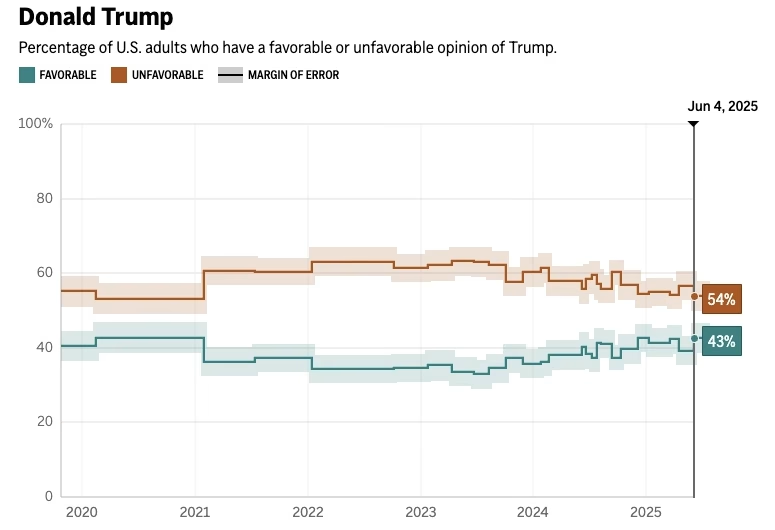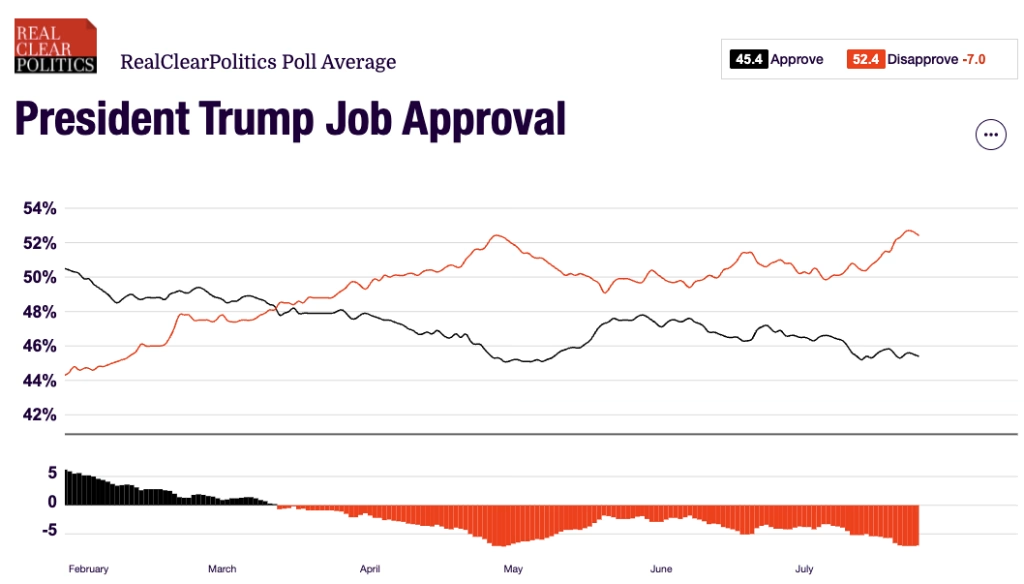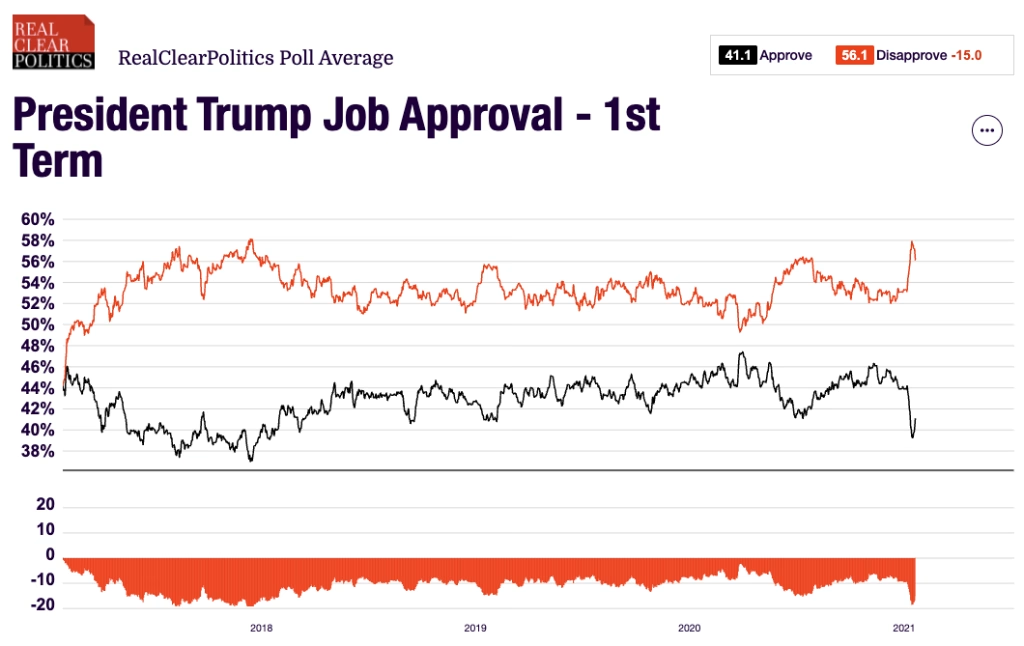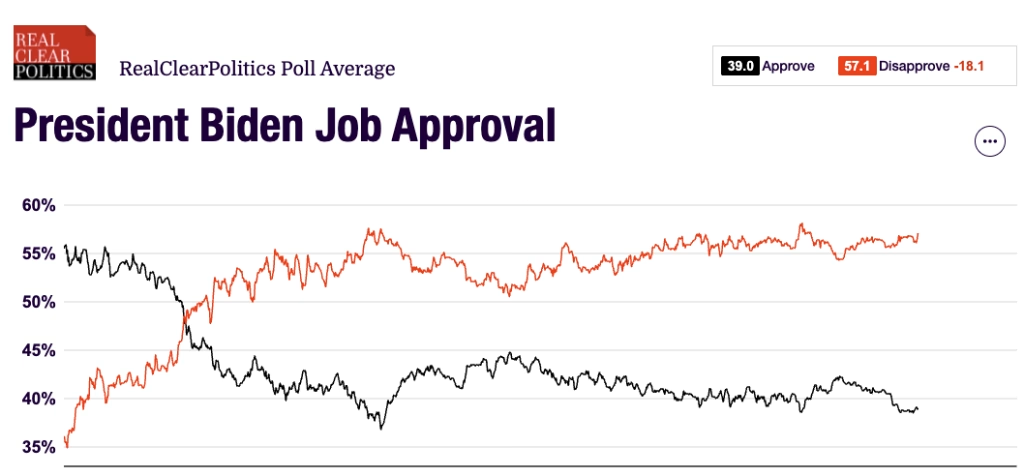AP polling editor Amelia Thomson-Deveaux and politics reporter Jonathan J. Cooper find, “It’s a year of rapid change, except when it comes to Trump’s approval numbers.”
Eric Hildenbrand has noticed prices continue to rise this year, even with President Donald Trump in the White House. He doesn’t blame Trump, his choice for president in 2024, but says Gov. Gavin Newsom and other Democrats who control his home state, California, are at fault.
“You can’t compare California with the rest of the country,” said Hildenbrand, who is 76 and lives in San Diego. “I don’t know what’s going on in the rest of the country. It seems like prices are dropping. Things are getting better, but I don’t necessarily see it here.”
Voters like Hildenbrand, whose support of the Republican president is unwavering, help explain Trump’s polling numbers and how they have differed from other presidents’ polling trajectory in significant ways. An Associated Press-NORC Center for Public Affairs Research poll conducted in March found that 42% of U.S. adults approved of Trump’s job performance. That is a lower rating than those of other recent presidents at the beginning of their second terms, including Democrat Barack Obama and Republican George W. Bush.
The most recent AP-NORC poll, from July, puts Trump at 40% approval. While that is not a meaningful change from March, there is some evidence that Trump’s support may be softening, at least on the margins. The July poll showed a slight decrease in approval of his handling of immigration since earlier in the year. Some other pollsters, such as Gallup, show a downward slide in overall approval since slightly earlier in his term, in January.
But even those shifts are within a relatively narrow range, which is typical for Trump. The new AP-NORC polling tracker shows that Trump’s favorability rating has remained largely steady since the end of his first term, with between 33% and 43% of U.S. adults saying they viewed him favorably across more than five years.
Those long-term trends underscore that Trump has many steadfast opponents. But loyal supporters also help explain why views of the president are hard to change even as he pursues policies that most Americans do not support, using an approach that many find abrasive.
Trump has not had a traditional honeymoon period in his second term. He did not in his first, either.
An AP-NORC poll conducted in March 2017, two months into his first term, showed that 42% of Americans “somewhat” or “strongly” approved of his performance. That is largely where his approval rating stayed over the course of the next four years.
The recent slippage on immigration is particularly significant because that issue was a major strength for Trump in the 2024 election. Earlier in his second term, it was also one of the few areas where he was outperforming his overall approval. In March, about half of U.S. adults approved of his handling of immigration. But the July AP-NORC poll found his approval on immigration at 43%, in line with his overall approval rating.
Their thesis, that Trump’s approval is anchored by steadfast supporters and opponents, is almost certainly correct. This graph of their own poll is remarkable:

That said, there’s a reason poll aggregators have become more popular over the last twenty years. While imperfect, they tend to smooth out irregularities and biases of individual polling firms, or simply outlier surveys. Here’s what RealClearPolitics shows for Trump’s second term thus far:

And this was his entire first term:

So, with the exception of the first couple days of his first term and first few weeks of his second term, he’s been underwater. But there has nonetheless been rather considerable, if bounded, fluctuation in his numbers.
But, as much as Trump would seem sui generis, here’s the RCP trends for President Biden’s entire term:

His honeymoon period was a bit longer than Trump’s, presumably a function of his campaign’s focus on bringing the country back together rather than simply energizing the base. But his fluctuation was roughly similar to Trump’s. It may simply be that, in our hyperpartisan, hyper-sorted era, there’s both a ceiling and a floor for presidential approval.
Click this link for the original source of this article.
Author: James Joyner
This content is courtesy of, and owned and copyrighted by, https://www.outsidethebeltway.com and its author. This content is made available by use of the public RSS feed offered by the host site and is used for educational purposes only. If you are the author or represent the host site and would like this content removed now and in the future, please contact USSANews.com using the email address in the Contact page found in the website menu.




